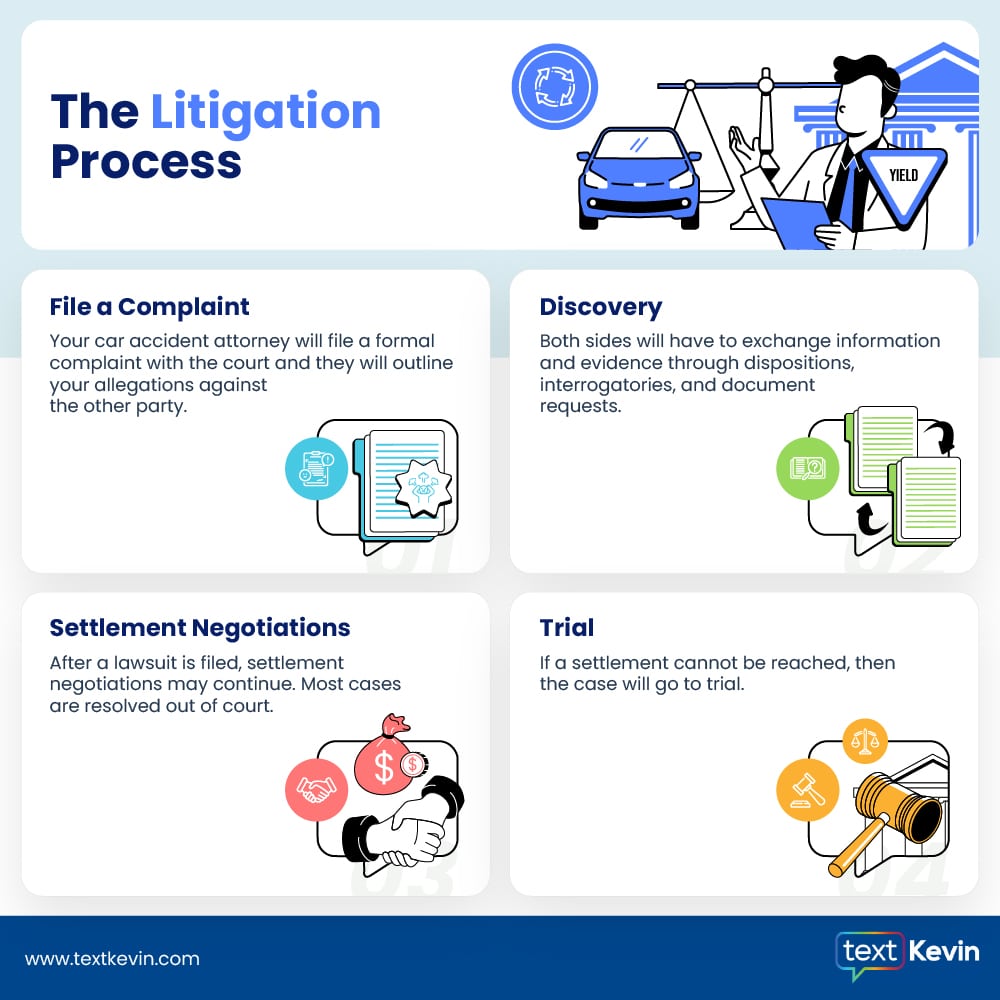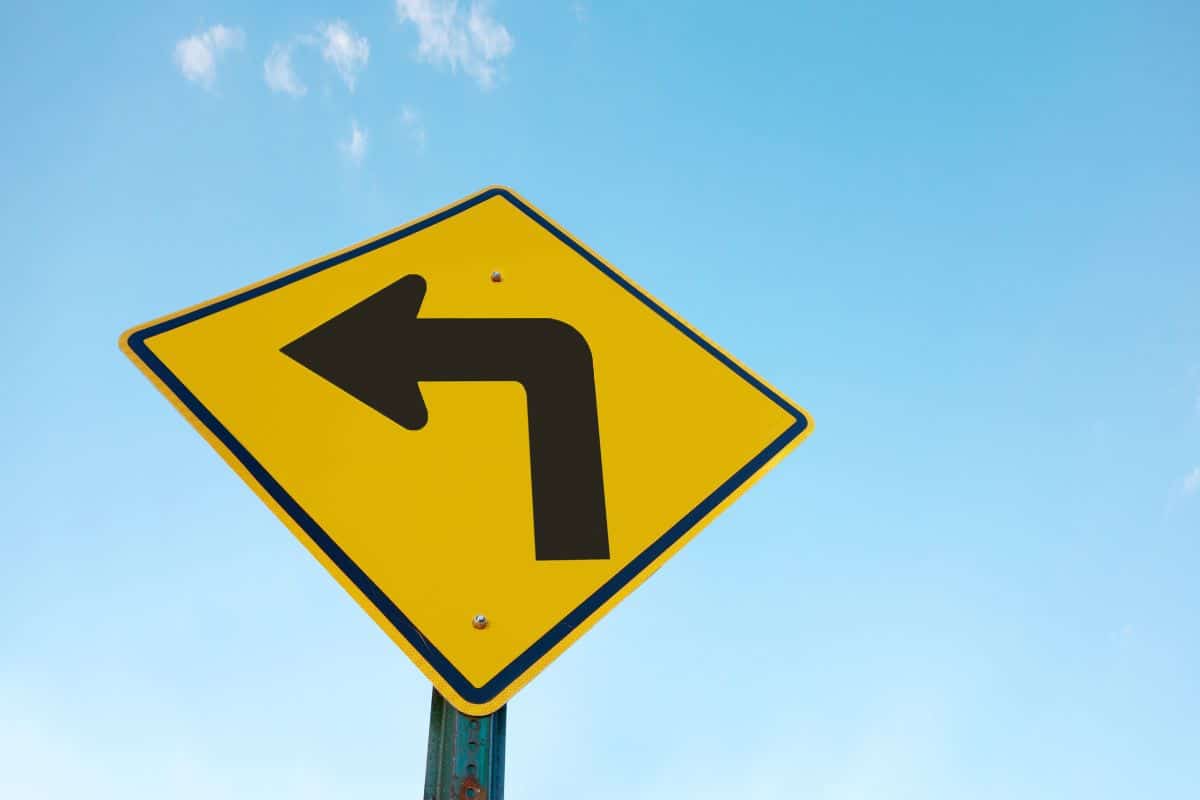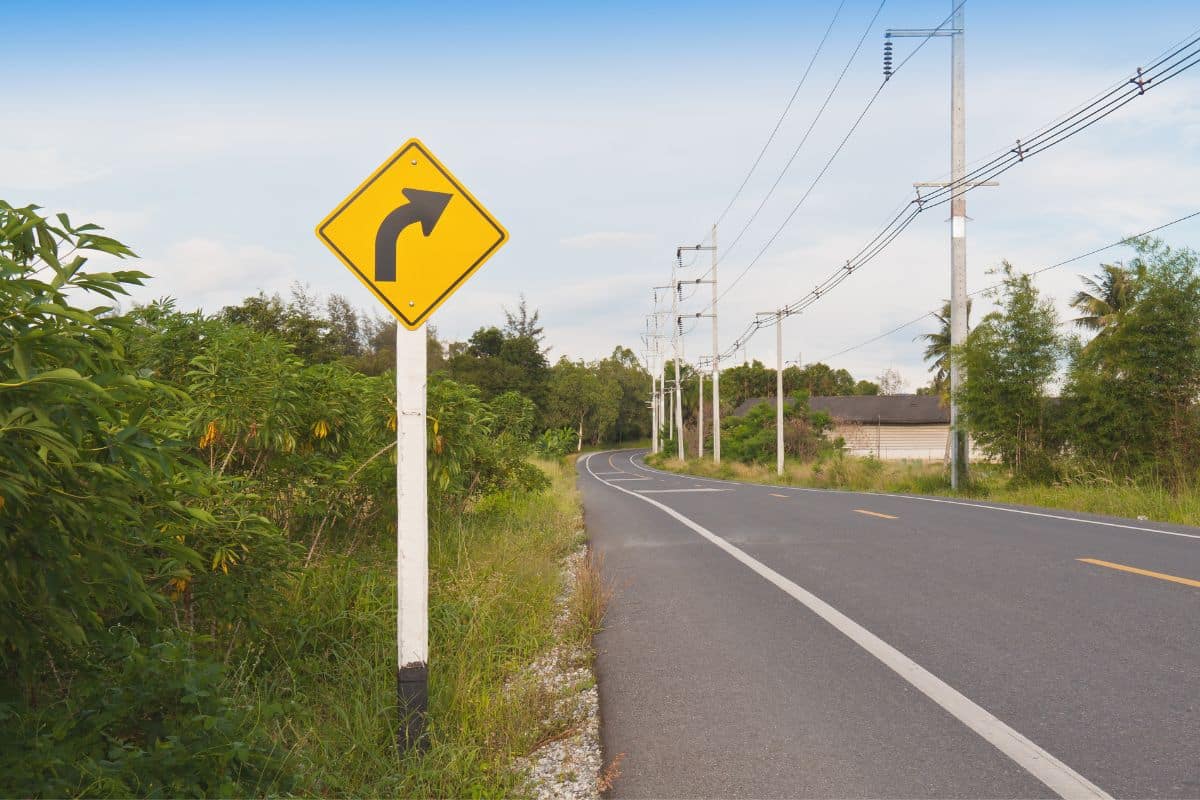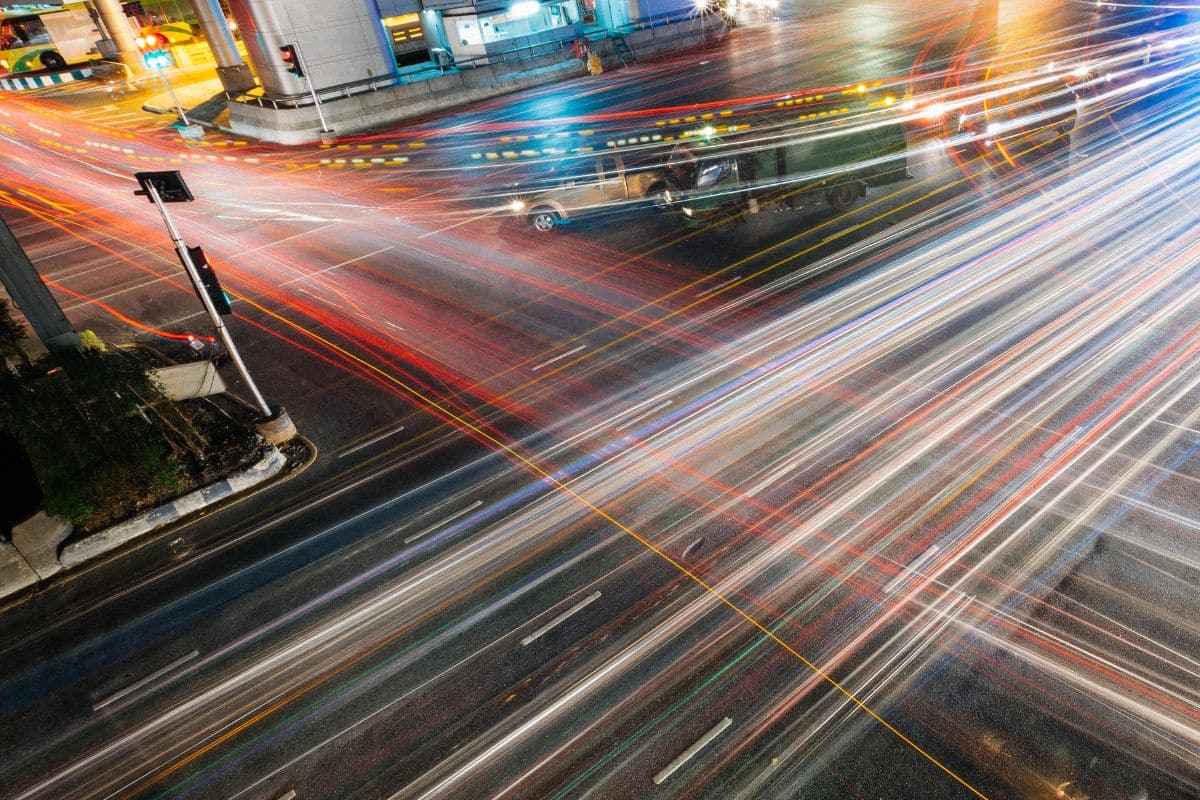In a California traffic circle, vehicles already circulating within the circle have the right-of-way. Vehicles entering the circle must yield to circulating traffic before proceeding.
Imagine cruising into a traffic circle, confident you’ve got the right of way, only to be jolted by a collision. The screech of tires, the crunch of metal – it’s a scenario no driver wants to face. The answer is clear in the California traffic circles: the vehicles already in the circle have the right of way.
This comprehensive guide will explain California’s traffic circle rules, debunk common misconceptions that lead to dangerous errors, and explore potential personal injury claim consequences when accidents occur. Don’t become another statistic.
The California traffic circle rules you should follow
While “traffic circle” and “roundabout” are often used interchangeably in California, subtle distinctions exist. Traditional traffic circles often have yield or stop signs at each entry point, whereas modern roundabouts prioritize continuous traffic flow with yield signs only for entering traffic.
Roundabouts also have specific design features, like a raised central island and splitter islands at entry points, to encourage slower speeds and safer merging. California is taking innovation a step further by introducing “turbo roundabouts.”
Note
These roundabouts, like those constructed at State Routes 25 and 156 in San Benito County, incorporate additional features to reduce the risk of collisions while maintaining efficiency. Turbo roundabouts aim to address specific safety concerns at high-risk intersections, serving as a testament to the state’s commitment to improving road safety through innovative designs.
Why do traffic circles matter?
Traffic circles, whether traditional or turbo, offer numerous benefits, including:
- Improved Traffic Flow: The continuous traffic movement reduces congestion and delays, particularly during peak hours.
- Reduced Severe Accidents: The design of traffic circles minimizes the risk of head-on and T-bone collisions, the most dangerous types of crashes.
- Increased Fuel Efficiency: Eliminating stop-and-go traffic leads to smoother driving, reducing fuel consumption and emissions.
California’s growing adoption of traffic circles
California increasingly embraces traffic circles as a safer and more efficient alternative to traditional intersections. The state’s Department of Transportation (Caltrans) actively incorporates roundabouts into new projects and redesigns existing intersections to improve safety and traffic flow.
This trend mirrors a broader nationwide adoption of roundabouts as communities recognize their potential to save lives and enhance transportation infrastructure.
California traffic circle right-of-way
In California, right-of-way laws are not just about politeness; they are critical for your safety and others on the road. These laws, outlined in California Vehicle Code Sections 21800-21809, cover various scenarios:
Entering the circle
When approaching a roundabout, slow down and be prepared to stop. Look to your left for circulating traffic. If there are no vehicles in the circle or if there is a safe gap, you may enter. However, always yield to vehicles already within the circle, regardless of their lane position.
Exiting the circle
Vehicles within the circle have the right-of-way to exit at their desired street. Signal your intention to exit by using your right turn signal before you reach the exit point. Be sure to check for pedestrians and cyclists who may be crossing the exit lane.
Multiple-lane roundabouts
In multi-lane roundabouts, yielding on entry and having the right-of-way on exit still apply. However, there are additional considerations:
- Before entering, choose the appropriate lane based on your intended exit. If you plan to exit immediately or soon after entering, use the right lane. If your exit is further around the circle, you may enter the left lane, but be prepared to yield to vehicles already in that lane.
- While in the roundabout, avoid changing lanes unless necessary. If you must change lanes, signal your intention and yield to any vehicles in the lane you are entering.
Pedestrians and cyclists
Pedestrians and cyclists have the right-of-way at crosswalks within or around the traffic circle. Drivers must yield to pedestrians and cyclists in the crosswalks, whether they are entering, exiting, or circulating within the roundabout.
Emergency vehicles
When you see an emergency vehicle approaching a roundabout with lights and sirens activated, yield to the emergency vehicle as you would at any other intersection. If you are already in the roundabout, continue to your exit and then pull over to the right to allow the emergency vehicle to pass.
Pro Tip
When navigating a traffic circle:
- Always yield to vehicles already in the circle.
- Use your turn signals to indicate your intentions.
- Choose the correct lane before entering a multi-lane roundabout.
- Yield to pedestrians and cyclists in crosswalks.
- Yield to emergency vehicles as you would at any intersection.
Dangerous errors and misconceptions in traffic circles rules
Navigating traffic circles can be confusing, leading to misconceptions that endanger drivers and others on the road. They include:
- “First In, First Out” is a dangerous fallacy. The vehicle already in the circle has the right-of-way, regardless of who arrived at the intersection first. Assuming otherwise can lead to collisions, as entering vehicles fail to yield.
- “Larger Vehicle Wins,” but the size of your vehicle does not grant you priority in a traffic circle. Trucks, buses, and other large vehicles must follow the same yield rules as smaller cars. This misconception can lead to aggressive driving and unnecessary accidents.
- Failure to Yield: This is the most common and dangerous error in traffic circles. Failing to yield to circulating traffic violates California law (CVC 21801) and is a leading cause of traffic circle accidents. It can result in sideswipe collisions, T-bone accidents, and rollovers, causing severe injuries like:
- Catastrophic injury
- Traumatic brain injury
- Burn injury
- Spinal cord injury
- Wrongful death in case of tragic accidents
- Improper Signaling: Turn signals are essential for clear communication in traffic circles. Signal your intentions when entering, changing lanes within the circle (if necessary), and exiting. Failing to signal can confuse other drivers and lead to collisions. Remember, a right turn signal is required when exiting the circle.
Traffic circle accidents and how they affect your personal injury claim
While often less severe than at traditional intersections, traffic circle accidents can still result in significant injuries and financial burdens. In most traffic circle collisions, the failure-to-yield rule is pivotal in determining fault.
The driver entering the circle is typically considered at fault if they fail to yield to circulating traffic. However, fault can be shared or shifted depending on factors such as excessive speed, distracted driving, or improper lane changes within the circle.
California follows a “comparative negligence” system, meaning that even if a driver is partially at fault, they may still be able to recover damages. The amount of compensation may be reduced based on the percentage of fault.
Traffic circle accidents often result in a range of injuries
Right-of-way situations can vary depending on the circumstances and road conditions. It’s essential to remain alert, pay attention to your surroundings, and always be prepared to yield when necessary. Here are some accidents you might face in case of a car accident:
- Whiplash: The sudden back-and-forth head motion can cause neck strain and soft tissue damage.
- Head Trauma: Concussions or more severe traumatic brain injuries can occur in high-impact collisions.
- Fractures and Broken Bones: A crash can fracture arms, legs, ribs, or even the spine.
- Internal Injuries: Damage to organs like the spleen or liver can be life-threatening.
- Soft Tissue Injuries: Sprains, strains, and contusions are common, causing pain and limiting mobility.
If you’ve been injured in a traffic circle accident, you have legal options
The first step is to file a claim with your or the at-fault driver’s insurance. An experienced legal professional can help you navigate the claims process and negotiate for fair compensation.
If negotiations with insurance companies fail to provide fair compensation for your injuries and losses sustained in a traffic circle accident, filing a personal injury lawsuit may be your next step. While this path can be complex and time-consuming, it offers the potential for more excellent compensation and justice when you have exhausted all other avenues.
Tip
To succeed in a personal injury lawsuit arising from a traffic circle accident, we must prove the other driver’s negligence. This involves showing that the other driver had a duty to exercise reasonable care, breached that duty (e.g., by failing to yield), and that this breach directly caused your injuries.Evidence that may be used to establish negligence includes:
- The official police report of the accident often contains crucial details about the scene, witness statements, and the officer’s assessment of fault.
- Eyewitnesses who saw the accident can provide valuable testimony about the events leading up to the collision.
- Visual evidence, such as photographs and videos of the scene, vehicle damage, and injuries, can be compelling evidence of the other driver’s fault and the extent of your damages.
- Accident reconstruction experts or medical professionals may be called to analyze the accident and your injuries and provide expert opinions to support your case.
Proving damages builds toward fair compensation
This goes beyond simply proving the other driver was at fault. You must also provide compelling evidence of the tangible and intangible losses you have suffered due to the accident. Economic damages are the financial losses directly resulting from the accident.
Economic damages
These are typically easier to calculate and prove, often involving documented expenses and losses.
- Medical Expenses: This includes all costs associated with your medical treatment, such as hospital bills, doctor’s visits, surgeries, medications, physical therapy, and future medical care if needed.
- Lost Wages: If your injuries prevented you from working, you can claim compensation for your lost income during your recovery period. This may also include future lost earnings if your injuries have long-term effects on your ability to work.
- Rehabilitation Costs: Physical therapy, occupational therapy, and other rehabilitation services can be expensive. You can seek compensation for these costs to aid in your recovery.
- Property Damage: If your vehicle or other personal property was damaged in the accident, you can claim compensation for repair or replacement costs.
Non-economic damages (intangible losses)
Non-economic damages are more difficult to quantify as they involve subjective losses that don’t have a clear monetary value. However, they are no less important in determining your overall compensation. Examples include:
- Pain and Suffering: includes physical pain and discomfort you experienced due to your injuries.
- Emotional Distress: The emotional trauma of the accident and your injuries, such as anxiety, depression, or post-traumatic stress disorder (PTSD), can be significant.
- Loss of Enjoyment of Life: If your injuries have limited your ability to engage in activities you previously enjoyed, you can seek compensation for this loss.
- Disfigurement: Scars, disfigurement, or other permanent changes to your appearance can also be considered non-economic damages.
The litigation process
If your case proceeds to a lawsuit, it will involve a series of legal procedures, including:
- Filing a Complaint: Your attorney will file a formal complaint with the court, outlining your allegations against the other driver.
- Discovery: Both sides will exchange information and evidence through depositions, interrogatories, and document requests.
- Settlement Negotiations: Even after a lawsuit is filed, settlement negotiations may continue. Many cases are resolved out of court.
- Trial: If a settlement cannot be reached, the case will go to trial, where a judge or jury will decide the outcome.

Seeking legal counsel is your best move.
We highly recommend you consult a personal injury attorney experienced in California traffic law. We can assess your case, gather evidence, negotiate with insurance companies, and represent your interests in court if necessary.
Your safety is our priority. Contact our legal team with questions or concerns about traffic circle right-of-way or personal injury claims. By working together, we can fight for your rights.










